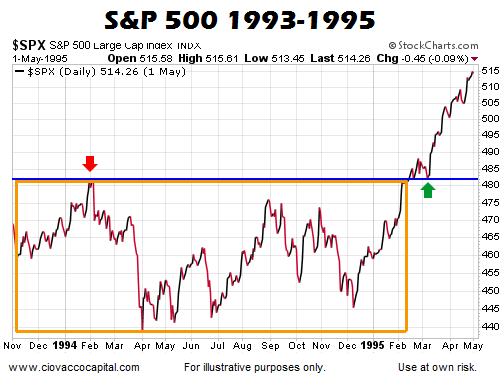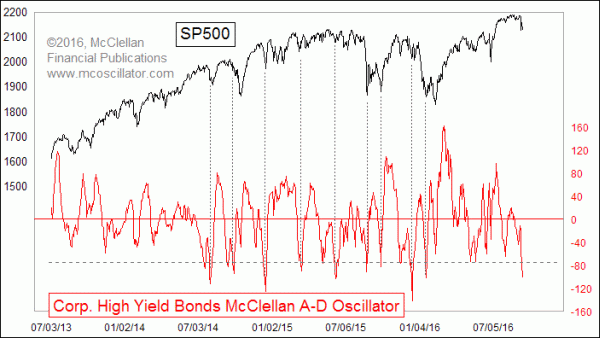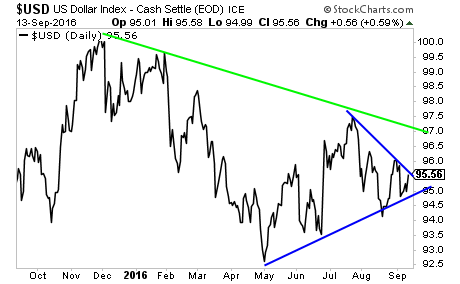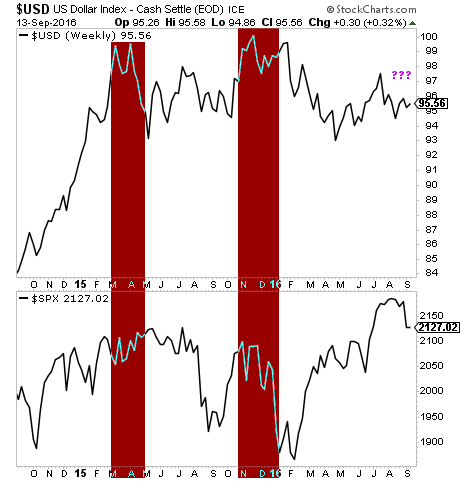Briefly: In our opinion, speculative short positions are favored (with stop-loss at 2,210, and profit target at 2,050, S&P 500 index).
Our intraday outlook is bearish, and our short-term outlook is bearish. Our medium-term outlook is now neutral, following S&P 500 index breakout above last year’s all-time high:
Intraday outlook (next 24 hours): bearish
Short-term outlook (next 1-2 weeks): bearish
Medium-term outlook (next 1-3 months): neutral
Long-term outlook (next year): neutral
The main U.S. stock market indexes were mixed between -0.2% and +0.5% on Wednesday, as investors continued to hesitate after recent move down. The S&P 500 index continues to trade below its two-month-long consolidation following June – July rally. Is this a new downtrend or just quick downward correction? The nearest important level of resistance is at around 2,170, marked by Friday’s daily gap down of 2,169.08-2,177.49. On the other hand, support level is at 2,120-2,130, marked by recent local lows, as we can see on the daily chart:
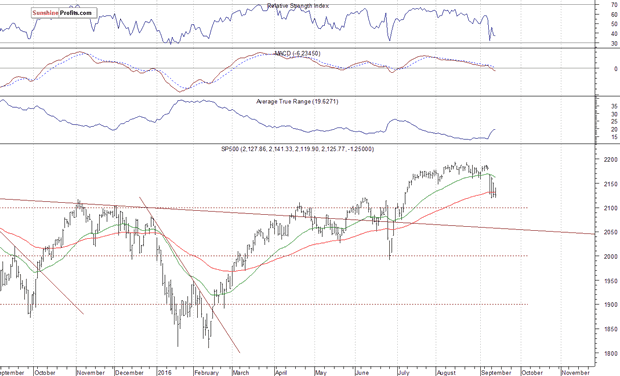
Larger Image
Expectations before the opening of today’s trading session are positive, with index futures currently up 0.4%. The European stock market indexes have been mixed so far. Investors will now wait for series of economic data announcements: Initial Claims, Retail Sales, Producer Price Index, Philadelphia Fed, Empire Manufacturing at 8:30 a.m., Industrial Production, Capacity Utilization at 9:15 a.m., Business Inventories at 10:00 a.m. The S&P 500 futures contract trades within an intraday uptrend, as it retraces some of its yesterday’s decline. The nearest important level of resistance is at around 2,130-2,135, marked by short-term local highs. On the other hand, support level remains at 2,100-2,110, as the 15-minute chart shows:
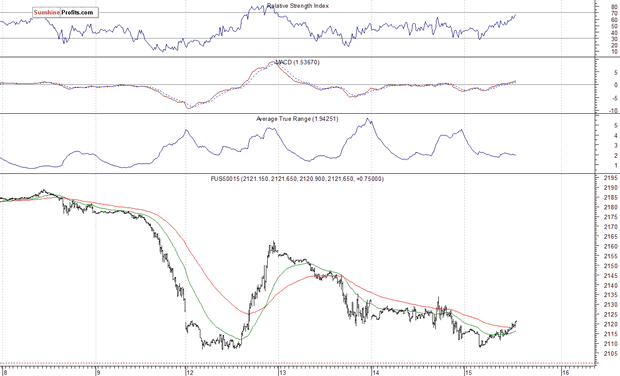
Larger Image
The technology Nasdaq 100 futures contract follows a similar path, as it retraces some of its yesterday’s move down. The nearest important level of resistance is at around 4,750-4,770, marked by short-term local highs. The nearest important support level is at 4,700-4,720. For now, it looks like a consolidation following Monday’s rally:
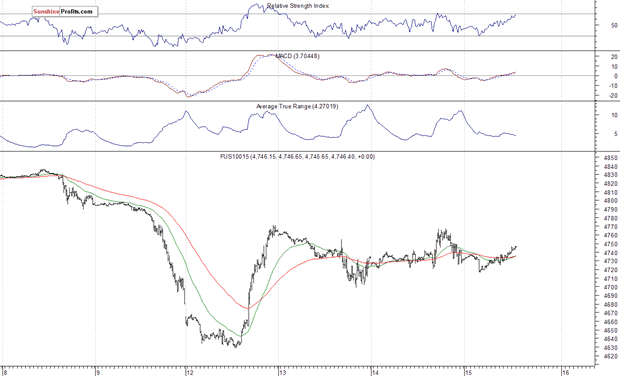
Larger Image
Concluding, the broad stock market continues to fluctuate following its recent move down. For now, it looks like consolidation within a downtrend. Therefore, we continue to maintain our speculative short position (opened on July 18th at 2,162, S&P 500 index). Stop-loss level is at 2,210 and potential profit target is at 2,050 (S&P 500 index). You can trade S&P 500 index using futures contracts (S&P 500 futures contract – SP, E-mini S&P 500 futures contract – ES) or an ETF like the SPDR S&P 500 ETF – SPY. It is always important to set some exit price level in case some events cause the price to move in the unlikely direction. Having safety measures in place helps limit potential losses while letting the gains grow.
Thank you.
Michael Campbell on – The Formula For Social Unrest & Political Upheaval
